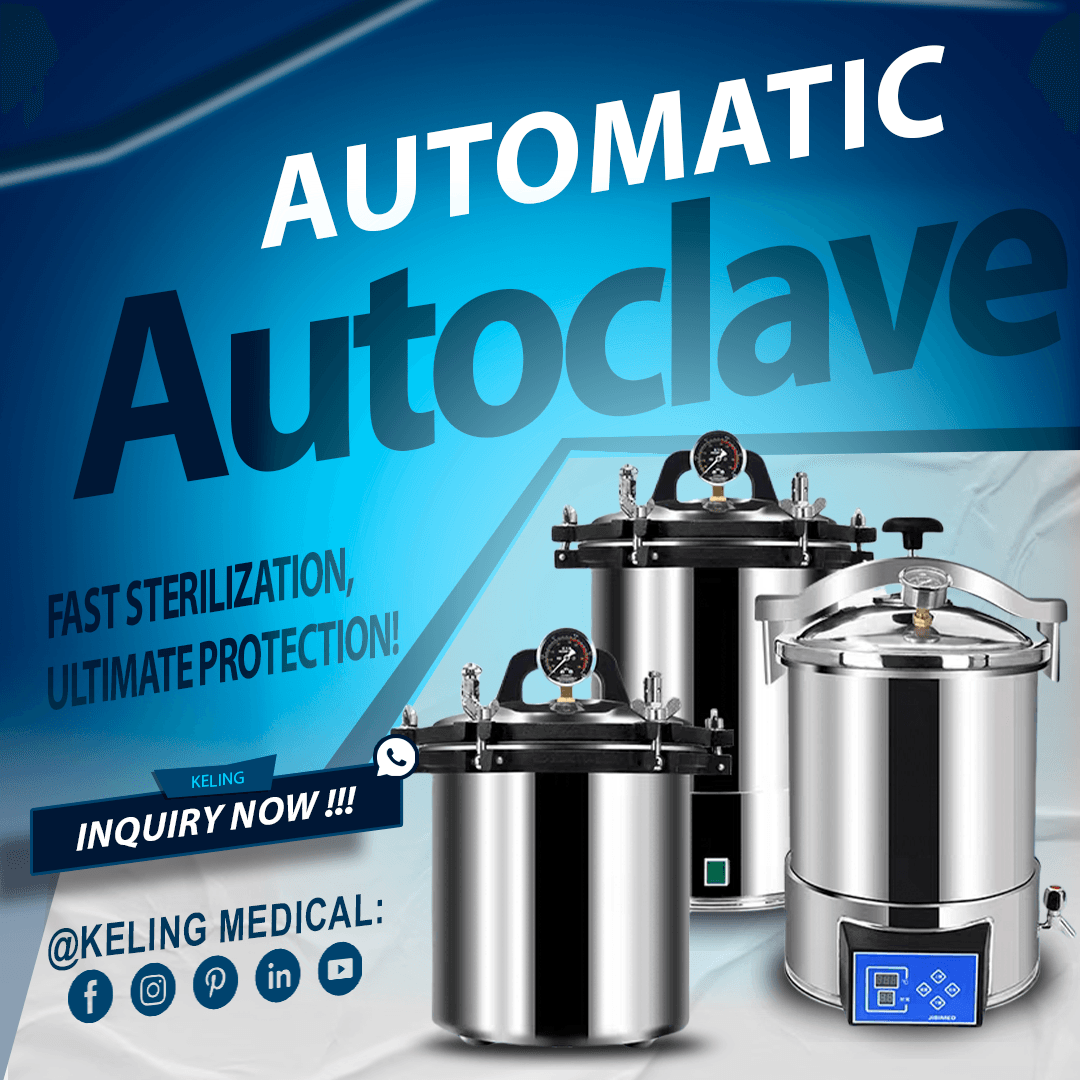
This article delivers an extensive maintenance manual for laboratory autoclaves covering daily checklists, troubleshooting tips and the necessity of regular calibration. Medical equipment distributors, resellers and procurement professionals who follow these best practices will enable their clients to fully utilize their autoclaves.
For inquiries about high-quality autoclaves and expert advice, contact us at inquiry@shkeling.com, WhatsApp mums +8618221822482arba apsilankykite mūsų svetainėje adresu autoclaveequipment.com.
The initial step to maintain autoclave efficiency and safety lies in daily maintenance routines.
Verify that the chamber contains no leftover residue or debris from prior sterilization cycles.
Use a soft cloth together with a non-abrasive autoclave cleaner to wipe down the interior of the chamber.
Inspect the door gasket for any presence of cracks, signs of wear, or indications of degradation.
Wipe away dirt and residue from the gasket with a damp cloth to maintain a proper seal.
Inspect the drain line to ensure it remains clear and free-flowing which prevents issues with sterilization cycles.
The drain line must be flushed according to manufacturer guidelines when blockages show up.
The water reservoir should contain clean distilled water.
Do not use hard water because it creates mineral deposits that reduce autoclave efficiency.
Conduct a brief empty cycle with the autoclave to verify its operational readiness before regular use.
During the test cycle look for any abnormal sounds, drips or error alerts to monitor performance.
Early identification of potential problems through this daily checklist helps prevent expensive repairs.
Autoclaves experience problems even when they undergo regular maintenance. The following section explains typical problems with autoclaves and their solutions.
Galimos priežastys:
Insufficient water in the reservoir.
Faulty heating element.
Sprendimas:
Refill the reservoir with distilled water.
Bring in a technician to assess the heating element and perform a replacement if required.
Galimos priežastys:
Kameros perkrovimas.
Blocked drain line.
Sprendimas:
Decrease the load amount to maintain appropriate steam movement.
Flush the drain line to remove blockages.
Galimos priežastys:
Damaged or worn door gasket.
Sprendimas:
Install a replacement gasket that meets the autoclave’s required specifications.
Galimos priežastys:
Software glitches or sensor malfunctions.
Sprendimas:
The user manual contains details about specific error codes.
Troubleshoot the autoclave by performing a reset or get help from a technician.
Quick resolution of common problems keeps autoclave operations running smoothly and efficient.
Autoclave maintenance requires regular calibration to achieve precise performance outcomes.
Effective sterilization depends on precise temperature and pressure measurements.
Regular calibration is mandatory across various industries to uphold regulatory standards and ensure safety compliance.
The calibration process helps detect problems before they cause major equipment breakdowns.
Manufacturers generally suggest annual calibration but high-usage autoclaves often need multiple checks throughout the year.
Qualified technicians must use specialized equipment to perform calibration procedures.
The autoclave must achieve and sustain the designated sterilization temperature to ensure proper performance.
Make sure pressure readings match the manufacturer’s specifications during testing.
Check that sterilization cycles operate for their designated length of time.
Autoclave longevity is increased through consistent calibration alongside dependable functioning performance.
Maintaining your autoclave properly can increase its functioning years while minimizing operational costs and equipment unavailability.
Scaling caused by hard water leads to damage of internal components.
Clean water generates steam at optimal levels which enhances efficiency.
After each use clean the chamber by removing any residue and debris to stop corrosion from developing.
To ensure a professional appearance, wipe down the autoclave’s exterior during cleaning routines.
At any indication of wear on the door gasket you should replace it to stop leaks.
Regular inspections followed by necessary replacements of filters and valves help to sustain proper performance.
Schedule yearly inspections performed by certified technicians to ensure optimal function of your equipment.
Regular software updates will keep the autoclave running at its best performance level.
These practices will help you achieve peak performance and extended life for your laboratory sterilizer.
Maintaining your laboratory autoclave is essential for ensuring reliable performance, safety, and compliance with industry standards. From daily maintenance checklists to regular calibration and troubleshooting, proper care can significantly extend the lifespan of your equipment and reduce operational costs.
By implementing these best practices, medical equipment distributors and procurement specialists can provide added value to their clients, ensuring their autoclaves operate at peak efficiency.
If you’re looking for high-quality autoclaves or need expert advice on maintenance, contact us today at inquiry@shkeling.com, WhatsApp mums +8618221822482arba apsilankykite mūsų svetainėje adresu autoclaveequipment.com.
It’s recommended to clean the chamber daily and perform a deep clean at least once a month, depending on usage.
Distilled water prevents mineral buildup, which can damage internal components and reduce efficiency.
Refer to the user manual for specific error codes. If the issue persists, contact a technician for assistance.
Calibration should be performed at least once a year or more frequently for high-usage autoclaves.
Yes, most door gaskets are easy to replace. However, ensure you use a gasket that matches the autoclave’s specifications.
For more information or to inquire about maintenance services, contact us at inquiry@shkeling.com, WhatsApp mums +8618221822482arba apsilankykite mūsų svetainėje adresu autoclaveequipment.com.

Įvadas Ligoninėse naudojami autoklavai yra viena svarbiausių investicijų į sveikatos priežiūros infrastruktūrą, nes jie yra pirmoji apsaugos nuo su sveikatos priežiūra susijusių infekcijų linija. Sudėtinga sterilizacijos įranga yra

Autoklavavimo procesas yra esminė sterilizacijos praktika, taikoma medicinos, laboratorijų ir mokslinių tyrimų įstaigose, siekiant veiksmingai sterilizuoti stiklo gaminius ir instrumentus. Aukšto slėgio garai pašalina patogenus per šį procesą.

Autoklavavimo procesas yra esminė sterilizacijos praktika, taikoma medicinos, laboratorijų ir mokslinių tyrimų įstaigose, siekiant veiksmingai sterilizuoti stiklo gaminius ir instrumentus. Aukšto slėgio garai pašalina patogenus per šį procesą.

Autoklavavimo procesas yra esminė sterilizacijos praktika, taikoma medicinos, laboratorijų ir mokslinių tyrimų įstaigose, siekiant veiksmingai sterilizuoti stiklo gaminius ir instrumentus. Aukšto slėgio garai pašalina patogenus per šį procesą.

Autoklavavimo procesas yra esminė sterilizacijos praktika, taikoma medicinos, laboratorijų ir mokslinių tyrimų įstaigose, siekiant veiksmingai sterilizuoti stiklo gaminius ir instrumentus. Aukšto slėgio garai pašalina patogenus per šį procesą.
Autoklavavimo procesas yra esminė sterilizacijos praktika, taikoma medicinos, laboratorijų ir mokslinių tyrimų įstaigose, siekiant veiksmingai sterilizuoti stiklo gaminius ir instrumentus. Aukšto slėgio garai pašalina patogenus per šį procesą.